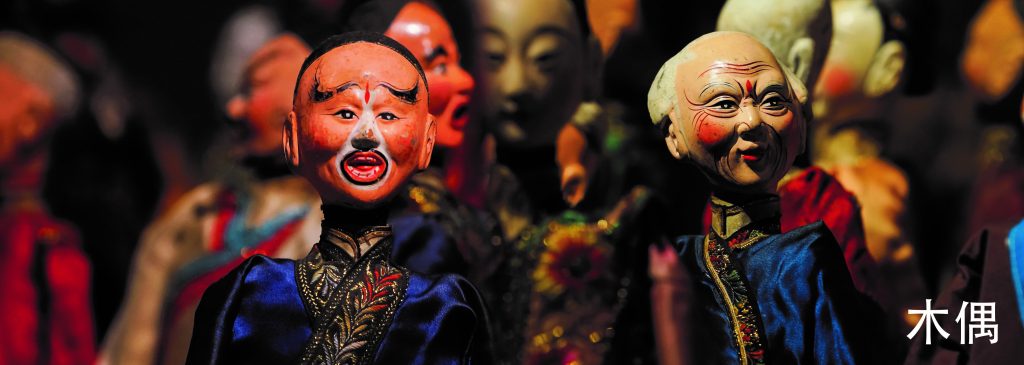MADE IN CHINA Heroes and Beauties, Clowns and Villains: The Magic of Chinese Puppet Theatre
Chinese Puppet and Mask Theatre
Every night hundreds of puppet theatre companies perform in village squares and temple festivals all over China. When the music starts the performance can begin. The performances of rod or string, shadow or glove puppets and even masked dancers bring to life the history of China, with all its heroes, beauties, devils and common people. The puppets and masks never grow old and are handed down from generation to generation. This tradition started over 2000 years ago during the Han dynasty with puppets and masks being used in religious ritual, which later developed into theatre performances. The Chinese puppet theatre never lost its religious roots, and despite the political turbulence of the 20th century, the Gods still appear on stage blessing the community and promising peace, riches and success in life.
This exhibition offers an insight in the exciting puppet theatre culture of China with puppets, shadows and masks from the north, the south and the west of the country. The very unique iron-rod puppets from the Chaozhou dialect area in southern China are well represented. These three-dimensional puppets developed from the shadow theatre and are the only puppets with clay instead of wooden heads. The shadow theatre itself is shown in the exhibition with many examples of the famous shadow puppets from Tangshan in northern China. Shadow theatre has its roots in Asia, and in central and northern China it developed into the most sophisticated form of shadow theatre in the world.
Glove puppet theatre originated in the coastal province of Fujian. The inhabitants of the province migrated as early as the 17th century to Taiwan and Southeast Asia, taking their glove puppet theatre tradition with them. In the exhibition we find the wild Golden Ray glove puppets from Taiwan and Wayang Potehi glove puppets from Indonesia. For the first time the puppets of the diaspora of the Fujian tradition and its transformations in different Chinese communities are shown together in one exhibition.
Last but not least is a magnificent set of Nuo masks from the Guizhou province in China. These ancient masks were worn and performed by village actors as part of seasonal religious rituals. The masks, like the puppets, are excellent examples of Chinese sculpture. Each mask is a piece of art by itself, they represent the faces of the Gods, heroes, beauties, devils and common people of China.
This exhibition opens a window on a unique and lively element of Chinese culture often unseen by visitors. Temporary stages are still constructed every night in the countryside and with the sound of gongs and drums, the puppets enter the stage in all their splendor.
Enjoy!
Robin Ruizendaal
